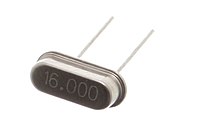
Photo from wikipedia
ABSTRACT Based on a two-segment plate flexural modelling, we investigated the effective elastic thickness of global subducting oceanic lithosphere. Our results show that for the plate age of 0 to… Click to show full abstract
ABSTRACT Based on a two-segment plate flexural modelling, we investigated the effective elastic thickness of global subducting oceanic lithosphere. Our results show that for the plate age of 0 to 50 Ma, the seaward effective elastic thickness TeM values are located between 600 and 900°C isotherms, and do not track any isotherm, while the majority of the trenchward effective elastic thickness Tem values are located between 300 and 600°C isotherms. For the plate age older than 50 Ma, TeM values basically matches the 600°C isotherm with some fluctuations for the age older than 110 Ma, while Tem values mainly fall between 200 and 400°C isotherms. The reduction in effective elastic thickness (TeM-Tem) varies from 2.6 to 30.1 km, or 11–68% of seaward TeM. Thus, the absolute value of the decrease in the effective elastic thicknesses (TeM-Tem) increases with the plate age, while the percentage reduction in the effective elastic thickness (1-Tem/TeM) has no obvious relationship with the age, but more related to the curvature of bending plate. Almost all bending-related earthquakes occurred above the TeM line, but many normal-faulting earthquakes are deeper than the TeM-Tem line, implying that the plate may still retain some thickness of an elastic property core in the areas (depth) where earthquakes occur.
Journal Title: International Geology Review
Year Published: 2018
Link to full text (if available)
Share on Social Media: Sign Up to like & get
recommendations!